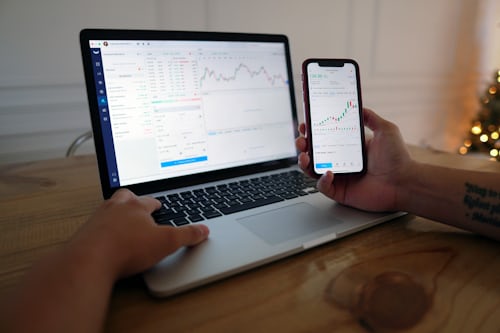Money laundering is a frequently used means for criminals to bring income from criminal offences and illegal business into the legal money circuit. Through money laundering, the origin of the money is concealed and the authorities can no longer trace how the capital came into circulation. In order to punish such financial transactions and to prevent money laundering, a so-called "Money Laundering Act" exists.
The Money Laundering Act regulates how financial flows are controlled. At the same time, this piece of legislation makes money laundering a criminal offence. The term "money laundering" probably originates from the time when the famous Mafia boss Al Capone set up laundries in the USA to "launder" the money from illegal transactions.
What is money laundering?
Here is example from Exness Asia, a criminal has collected a lot of money through extortion. He receives this capital in cash. In order to transfer the illegally acquired money into the legal money cycle, investments are made, also in cash. The objects acquired in the process can now be kept or sold again. The money collected in this way is then "laundered", so to speak.
What does the Money Laundering Act contain?
The Money Laundering Act (GwG) defines money laundering as a criminal offence that is punished accordingly by the authorities.
The basis for today's Money Laundering Act was provided by the "Act to Combat Illegal Drug Trafficking and Other Forms of Organised Crime (OrgKG)" from 1992. Since then, money laundering has been a criminal offence. Subsequently, the law was repeatedly adapted and renewed.
The current draft law not only takes money laundering per se into account, but also considers money transfers for terrorist financing. Compliance with the legal requirements is controlled by the respective supervisory authorities of the federal states.
EU Money Laundering Directive: Innovations and Changes
The European Union first issued its own directive on combating money laundering in 1991. Six years later, the European Council finally adopted common measures to combat and investigate money laundering. These include, for example, the freezing or confiscation of current accounts used to legalise funds from criminal transactions.
Finally, in 2006, the EU Money Transfer Regulation was created. It stipulates that the identity of the payer must be stated when money is transferred. In addition, payment service providers have since been obliged to forward the information on the payer for each payment transaction.
In 2015, the European Parliament adopted the Fourth Money Laundering Directive, also known as the EU Money Laundering Directive. At the same time, an amendment to the Money Transfer Regulation was issued. These directives entered into force in June 2015. Since then, the legislators of the member states had two years to implement these regulations into national law.
With the introduction of the new EU Money Laundering Directive, stricter regulations apply than before. In particular, the "obligated parties" must check even more strictly. At the same time, the law is no longer directed only against money laundering, but also against terrorist financing. Another new aspect is that obligated parties must now check every transaction or individual business relationship for possible money laundering or terrorist financing. Banks and insurance companies as well as other service providers therefore expect an increased administrative burden. Various risk factors play a role in the examination. The individual check is intended to prevent automated and thus inaccurate checks.






